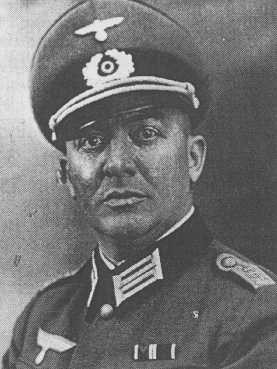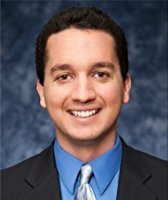
-personal physician to Adolf Hitler, Karl Brandt, director of the Euthanasia Program. August 27, 1942

-Friederich Menneke, Nazi euthanasia program physician
Aktion T4 – Nazi euthanasia program
“The Euthanasia Program was Nazi Germany’s first program of mass murder. It predated the genocide of European Jewry (the Holocaust) by approximately two years. The program was one of many radical eugenic measures which aimed to restore the racial “integrity” of the German nation. It aimed to eliminate what eugenicists and their supporters considered “life unworthy of life”: those individuals who—they believed—because of severe psychiatric, neurological, or physical disabilities represented both a genetic and a financial burden on German society and the state.
Child “Euthanasia” Program
In the spring and summer months of 1939, a number of planners began to organize a secret killing operation targeting disabled children. They were led by Philipp Bouhler, the director of Hitler’s private chancellery, and Karl Brandt, Hitler’s attending physician.
On August 18, 1939, the Reich Ministry of the Interior circulated a decree requiring all physicians, nurses, and midwives to report newborn infants and children under the age of three who showed signs of severe mental or physical disability.
Beginning in October 1939, public health authorities began to encourage parents of children with disabilities to admit their young children to one of a number of specially designated pediatric clinics throughout Germany and Austria. In reality, the clinics were children’s killing wards. There, specially recruited medical staff murdered their young charges by lethal overdoses of medication or by starvation.
At first, medical professionals and clinic administrators included only infants and toddlers in the operation. As the scope of the measure widened, they included youths up to 17 years of age. Conservative estimates suggest that at least 5,000 physically and mentally disabled German children perished as a result of the child “euthanasia” program during the war years.
Extending the “Euthanasia” Program
Euthanasia planners quickly envisioned extending the killing program to adult disabled patients living in institutional settings. In the autumn of 1939, Adolf Hitler signed a secret authorization in order to protect participating physicians, medical staff, and administrators from prosecution. This authorization was backdated to September 1, 1939, to suggest that the effort was related to wartime measures.
The Führer Chancellery was compact and separate from state, government, or Nazi Party apparatuses. For these reasons, Hitler chose it to serve as the engine for the “euthanasia” campaign. The program’s functionaries called their secret enterprise “T4.” This code-name came from the street address of the program’s coordinating office in Berlin: Tiergartenstrasse 4.
According to Hitler’s directive, Führer Chancellery director Phillip Bouhler and physician Karl Brandt led the killing operation. Under their leadership, T4 operatives established six gassing installations for adults as part of the “euthanasia” action. These were:
- Brandenburg, on the Havel River near Berlin
- Grafeneck, in southwestern Germany
- Bernburg, in Saxony
- Sonnenstein, also in Saxony
- Hartheim, near Linz on the Danube in Austria
- Hadamar, in Hessen
Euthanasia Program
Using a practice developed for the child “euthanasia” program, in the autumn of 1939 T4 planners began to distribute carefully formulated questionnaires to all public health officials, public and private hospitals, mental institutions, and nursing homes for the chronically ill and aged. The limited space and wording on the forms, as well as the instructions in the accompanying cover letter, combined to give the impression that the survey was intended simply to gather statistical data.
The form’s sinister purpose was suggested only by the emphasis placed upon the patient’s capacity to work and by the categories of patients which the inquiry required health authorities to identify. The categories of patients were those suffering from:
schizophrenia,
epilepsy,
dementia,
encephalitis,
and other chronic psychiatric or neurological disorders
those not of German or “related” blood
the criminally insane or those committed on criminal grounds
those who had been confined to the institution in question for more than five years
Secretly recruited “medical experts,” physicians—many of them of significant reputation—worked in teams of three to evaluate the forms. On the basis of their decisions beginning in January 1940, T4 functionaries began to remove patients selected for the “euthanasia” program from their home institutions. The patients were transported by bus or by rail to one of the central gassing installations for killing.
Within hours of their arrival at such centers, the victims perished in gas chambers. The gas chambers, disguised as shower facilities, used pure carbon monoxide gas. T4 functionaries burned the bodies in crematoria attached to the gassing facilities. Other workers took the ashes of cremated victims from a common pile and placed them in urns to send to the relatives of the victims. The families or guardians of the victims received such an urn, along with a death certificate and other documentation, listing a fictive cause and date of death.
Because the program was secret, T-4 planners and functionaries took elaborate measures to conceal its deadly designs. Even though physicians and institutional administrators falsified official records in every case to indicate that the victims died of natural causes, the “euthanasia” program quickly become an open secret. There was widespread public knowledge of the measure. Private and public protests concerning the killings took place, especially from members of the German clergy. Among these clergy was the bishop of Münster, Clemens August Count von Galen. He protested the T-4 killings in a sermon August 13, 1941. In light of the widespread public knowledge and the public and private protests, Hitler ordered a halt to the euthanasia program in late August 1941.
According to T4’s own internal calculations, the euthanasia effort claimed the lives of 70,273 institutionalized mentally and physically disabled persons at the six gassing facilities between January 1940 and August 1941.
Second Phase
Hitler’s call for a halt to the T4 action did not mean an end to the euthanasia killing operation. Child euthanasia continued as before. Moreover, in August 1942, German medical professionals and healthcare workers resumed the killings, although in a more carefully concealed manner than before. More decentralized than the initial gassing phase, the renewed effort relied closely upon regional exigencies, with local authorities determining the pace of the killing.
Using drug overdose and lethal injection—already successfully used in child euthanasia—in this second phase as a more covert means of killing, the euthanasia campaign resumed at a broad range of institutions throughout the Reich. Many of these institutions also systematically starved adult and child victims.
The Euthanasia Program continued until the last days of World War II, expanding to include an ever wider range of victims, including geriatric patients, bombing victims, and foreign forced laborers. Historians estimate that the Euthanasia Program, in all its phases, claimed the lives of 250,000 individuals.
People with Disabilities in the German-Occupied East
Persons with disabilities also fell victim to German violence in the German-occupied east. The Germans confined the Euthanasia Program, which began as a racial hygiene measure, to the Reich proper—that is, to Germany and to the annexed territories of Austria, Alsace-Lorraine, the Protectorate of Bohemia and Moravia, and the Warthegau in former Poland. However, the Nazi ideological conviction which labeled these persons “life unworthy of life” also made institutionalized patients the targets of shooting actions in Poland and the Soviet Union. There, the killings of disabled patients were the work of SS and police forces, not of the physicians, caretakers, and T4 administrators who implemented the Euthanasia Program itself.
In areas of Pomerania, West Prussia, and occupied Poland, SS and police units murdered some 30,000 patients by the autumn of 1941 in order to accommodate ethnic German settlers (Volksdeutsche) transferred there from the Baltic countries and other areas.
SS and police units also murdered disabled patients in mass shootings and gas vans in occupied Soviet territories. Thousands more died, murdered in their beds and wards by SS and auxiliary police units in Poland and the Soviet Union. These murders lacked the ideological component attributed to the centralized Euthanasia Program. The SS was apparently motivated primarily by economic and material concerns in killing institutionalized patients in occupied Poland and the Soviet Union.
The SS and the Wehrmacht quickly made use of the hospitals emptied in these killing operations as barracks, reserve hospitals, and munitions storage depots. In rare cases, the SS used the empty facilities as a formal T4 killing site. An example is the euthanasia facility Tiegenhof, near Gnesen (today Gniezno, in west-central Poland).
The Significance of the Euthanasia Program
The Euthanasia Program represented in many ways a rehearsal for Nazi Germany’s subsequent genocidal policies. The Nazi leadership extended the ideological justification conceived by medical perpetrators for the destruction of the “unfit” to other categories of perceived biological enemies, most notably to Jews and Roma (Gypsies).
Planners of the “Final Solution” later borrowed the gas chamber and accompanying crematoria, specifically designed for the T4 campaign, to murder Jews in German-occupied Europe. T4 personnel who had shown themselves reliable in this first mass murder program figured prominently among the German staff stationed at the Operation Reinhard killing centers of Belzec, Sobibor, and Treblinka.
Like those who planned the physical annihilation of the European Jews, the planners of the Euthanasia Program imagined a racially pure and productive society. They embraced radical strategies to eliminate those who did not fit within their vision.”

-by Trent Horn
“On February 25, 1990, twenty-six-year-old Terri Schiavo collapsed at home and suffered oxygen deprivation. Paramedics rushed her to the hospital but, while they were able to save her life, Schiavo was left in a persistent vegetative state (PVS) until she died from having her feeding tube removed in 2005.
No one would deny that Terri was a person prior to her collapse, but did she lose her personhood once she became brain damaged?
Lawyer and author Wesley J. Smith and bioethicist Bill Allen debated this on Court TV Online. At one point Smith asked, “[D]o you think Terri is a person?” to which Allen responded, “No, I do not. I think having awareness is an essential criterion for personhood. Even minimal awareness would support some criterion of personhood, but I don’t think complete absence of awareness does.”
Many people share Allen’s view, believing that humans in persistent vegetative states are not persons anymore—and so they can be deprived of basic necessities like food or water in order to end their lives. But here are three questions you should ask those who defend euthanizing disabled people in these conditions:
1. Would you bury a breathing body?
When a person stops existing, we say that person has died. Normally, when a person has died, what remains is a corpse. However, if personhood is not an essential property of human beings, then there can be cases where a person has died but the “remains” left behind is a living, breathing human body.
A corpse should not be desecrated, but there is no obligation to treat it like a human being. It is not a human being but the remains of a human being. So why not treat someone in an irreversible coma like a corpse and load him into an incinerator? Why not bury him in a grave as their chest rises and falls until the dirt that covers his body causes his breathing to stop?
A person who did this might try to take solace in the assumption the person can’t feel anything, but to watch the spasms that living body would undergo as the lungs failed would probably sicken most people. They would see that this is not a corpse that is being buried, but a a disabled person who is being killed by asphyxiation.
Consider the case of Schiavo in particular. Over the fifteen years after her collapse, she did not require the use of a ventilator (except for immediately following the collapse) and was able to breathe on her own. In a sense, she simply required the care a baby would require—food, clothing, shelter, and someone to oversee the administration of this care. To deprive her of food and water just because she was disabled was to bring about her death not by some underlying disease but by depriving her of that which all humans require; it was to bring about her death by dehydration, a fate no human should have to endure.
2. Which disabled people deserve to be protected?
To those who support euthanizing people in persistent vegetative states, you could pose this question: “Should we help all disabled people no matter what disability they have? If not, on what basis do we decide who’s worth helping and who’s worth killing? Wouldn’t that result in us making a judgment call on the value of another’s life?”
Most people, being committed to justice and fairness, won’t say there are some disabled people we shouldn’t help. You can then ask, “What does it mean to be disabled or have a disability?” Most people, when comparing paraplegia, blindness, deafness, or mobility impairments would say that a disability is “something that keeps you from functioning like the majority of people.”
These could be physical disabilities that keep someone from acting a certain way or mental disabilities that keep someone from thinking a certain way. Normally, when someone has a disability we are compassionate towards him and try to accommodate his inability to function. For example, we make handicapped parking accessible or we put up signs in braille that the blind can read. Keeping this in mind, when someone is in a coma he is like individuals with other handicaps—he cannot function as the majority can. Shouldn’t we show such individuals compassion and make accommodations in their condition rather than say they aren’t persons?
3. How do you know they won’t wake up?
In 1989, a stampede at the Hillsborough Soccer Stadium in Sheffield England left ninety-six people dead and hundreds injured. One of the injured was Tony Bland, who went into a PVS and was later killed through the removal of nutrition. But one year later, Andrew Devine, another injured fan who also ended up in a PVS, began to show signs of awareness. In 2014 he was healthy enough to attend the 30th anniversary of the Hillsborough disaster.
Two years prior to Terri Schiavo collapsing, a twelve-year-old boy in South Africa, Martin Pistorius, became became so ill that he lived in a “virtual coma” for over a decade, incapable of communicating to others that he was aware inside. But one day, in 2001, the tender compassion of a caregiver interacting with Pistorius would lead the woman to think her patient was indeed aware and could communicate if creative ways were developed to do so.
Today Pistorius is happily married and has authored a book about his journey. Although for a time his need for basic care was similar to Schiavo’s, his outcome was very different than hers. But if we valued all humans as persons, regardless of current or perceived future abilities, then perhaps their endings would have been more alike.
In a radio interview about his ordeal, Pistorius reflected, “I think being seen and having another person validate your existence is incredibly important.” Powerful words for us and for anyone who thinks that disabilities can erase a person’s basic human worth.”
Love,
Matthew

